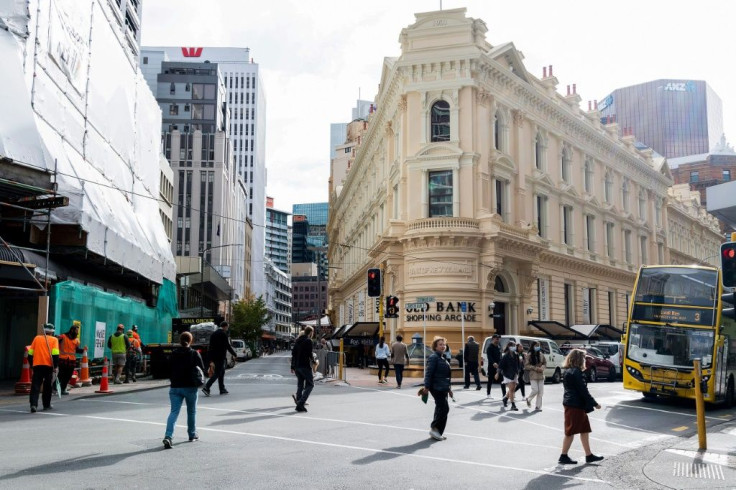5 Tech Trends Expected To Shape Retail Through The End Of The Year As Result Of The Coronavirus Pandemic

KEY POINTS
- Retail sales were up in May but they're still below February levels. June figures are due Thursday
- The National Retail Federation says back-to-school shopping is expected to be up over last year, driven by purchases of laptops and peripherals
- Among the electronic solutions retailers are pursuing are cashierless checkout systems and innovations in delivery options
The coronavirus pandemic has accelerated digital plans by retailers attempting to “futureproof” their operations to meet fast-changing consumer behavior, advisory company Coresight Research reported Wednesday.
Coresight identified five trends it expects to shape the rest of the year for retailers: ominichannel fulfillment options including delivery robots, cashierless transactions, computational forecasts to predict demand, augmented reality e-commerce and artificial-intelligence inventory monitoring.
“Retailers and brands will need to collaborate more than ever with technology startups to futureproof their businesses and be better equipped to meet fast-changing consumer demand and behavior,” Coresight said.
June retail sales figures are due to be released Thursday. In May, sales rebounded by 17.7%, the largest monthly surge on record, but they’re still below February levels, and some categories were way off – 63% for clothing, for example.
The National Retail Federation predicted Wednesday, however, the coronavirus pandemic won’t cut into back-to-school shopping. NRF President and CEO Matthew Shay said whether schools open fully or not, parents want their children to be prepared and are planning to spend $101.6 billion, up from $80.7 billion last year, with laptops and peripherals accounting for the bulk of the increase.
“By any measure, this is an unprecedented year with great uncertainty, including how students will get their education this fall whether they are in kindergarten or college,” Shay said in a press release. “Most parents don’t know whether their children will be sitting in a classroom or in front of a computer in the dining room, or a combination of the two.”
Much of that shopping is expected to take place online.
A Coresight survey indicated three-quarters of consumers were moving to online shopping. Adobe Analytics data from the U.S. and U.K. indicated buy online, pickup in store increased 208% in April compared with April 2019 as consumers looked for options amid shutdowns mandated by the pandemic.
Best Buy reported curbside deliveries increased more than 300% in the quarter ended April 30 while Macy’s reported a 72% increase and Kohl’s reported 40%. Target reported its pickup service increased 50% over last year while drive-up increased 500%. Companies also are moving ahead with autonomous last-mile delivery systems to cut shipping costs.
Coresight reported the pandemic has piqued consumer interest in cashierless models. Technology firm Shekel Brainweigh said 87% of respondents to its global consumer survey indicated they would choose stores with self-checkout over those with only cashier lines. Amazon pioneered a “just walk out” system and Tuesday announced a shopping cart system that will tally up orders as consumers shop.
“As consumers gravitate to more self-guided store experiences, we believe that the next progression will be touch-free shopping experiences. This would involve shoppers scanning bar codes or QR codes to receive information about desired products through their smartphones -- further reducing direct, in-store interactions and creating a more contactless experience,” Coresight said.
Many retailers are also looking for inventory control solutions, seeking to leverage big data combined with computational forecasting – so-called ML forecasting – to better match inventory with demand.
“More retailers and brands will focus on AI [artificial intelligence] and ML as the core technologies underlying demand forecasting solutions, as these can realize a high degree of automation—applying algorithms with minimum intervention from data scientists. Some innovators have already begun to disrupt this sector,” Coresight said.
“With the rise in e-commerce and omnichannel retail, it has become more important than ever for retailers to understand their in-store inventory levels.
With consumers reluctant to visit stores, retailers also are looking to augmented reality to enhance the online shopping experience with 3D environments and 360-degree videos.
© Copyright IBTimes 2025. All rights reserved.




















